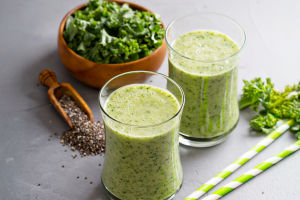Freshly squeezed coconut juice is one of the simplest yet most refreshing drinks we can make at home. Its naturally sweet and creamy flavor is far superior to any store-bought version.
Not only do we get a delicious drink, but we also make full use of every part of the coconut by turning leftover pulp into a versatile ingredient for baking or desserts. With clear steps and a little attention to detail, we can enjoy this tropical treat anytime.
What We Need
Ingredients:
- Mature coconuts: 2 pieces (hard shell, thick meat ≥1 cm)
- Sugar: 15–20 g (adjust to taste)
- Water: optional 50–100 ml if the coconut meat is very dry
Tools:
- Blender or food processor
- Fine sieve or cheesecloth
- machete and cutting board
- Baking tray
- Oven (for drying pulp)
- Gloves (optional, for pressing pulp by hand)
- Bowl or container for collecting juice
Tip: Using thick, mature coconuts ensures the juice is rich and creamy, while keeping some natural coconut liquid enhances flavor.
Step 1: Prepare the Coconut
1. Remove the coconut shell carefully (ask a helper if needed).
2. Clean off the brown skin from the white meat.
3. Keep any natural coconut liquid that clings to the meat.
4. Cut the coconut meat into small, corn-sized pieces for easy blending.
Tip: Thick meat and natural coconut liquid are key to achieving a creamy, rich juice. Cutting into small pieces helps the blender work more efficiently.
Step 2: Blend the Coconut
1. Place half of the coconut chunks into the blender.
2. Add 50–100 ml of the natural coconut liquid.
3. Blend at high speed until smooth and creamy.
4. Add sugar (15–20 g) and blend again until fully incorporated.
Tip: Avoid overfilling the blender—keep it under two-thirds full to prevent uneven blending or spillage. If the coconut feels dry, add a little water to help.
Step 3: Filter the Juice
1. Pour the blended mixture through a fine sieve or cheesecloth into a bowl.
2. Press the remaining pulp by hand or with a spatula to extract all the juice.
3. Transfer the juice into a serving container or glass.
Tip: Freshly squeezed coconut juice is best consumed within 2 hours for optimal flavor and creamy texture.
Step 4: Make Use of Leftover Pulp
1. Spread wet coconut pulp evenly on a baking tray.
2. Dry it in a hot-air oven at 70°C for 24 hours.
3. Store dried pulp in an airtight container for later use.
Tip: Dried coconut pulp can be added to cookies, cakes, granola, or other desserts. Typically, two coconuts yield around 50 g of wet pulp, producing roughly 35% dry pulp after baking. This ensures nothing goes to waste.
Step 5: Practical Tips
- Wear gloves when pressing the pulp to keep hands clean.
- Adjust sugar according to personal taste for a unique flavor each time.
- Blend in small batches for smoother texture and easier handling.
- Keep the juice chilled if not consumed immediately for a refreshing experience.
Step 6: Step-by-Step Summary
1. Remove coconut shell and clean off the brown skin.
2. Cut coconut meat into small, corn-sized pieces.
3. Blend coconut meat with natural coconut liquid.
4. Add sugar and blend until smooth.
5. Filter juice through a sieve or cheesecloth.
6. Press pulp to extract remaining juice.
7. Spread pulp on a tray and dry at 70°C for 24 hours.
8. Store dried pulp in an airtight container.
Tip: Following these steps ensures we get the richest, creamiest coconut juice possible while maximizing the use of every part of the coconut.
Enjoy Your Coconut Juice
Lykkers, now we have a creamy, naturally sweet coconut juice ready to drink. It’s refreshing, healthy, and perfect for a hot day or as a tropical snack. The leftover dried pulp adds versatility for baking or desserts. By making this juice at home, we not only enjoy a delicious drink but also embrace a fun and rewarding kitchen experience. Let’s raise a glass and celebrate the simple joys of fresh, natural flavors together!
Enjoy Every Sip
Lykkers, making freshly squeezed coconut juice at home is easy, fun, and incredibly rewarding. We get a rich, creamy drink while making full use of leftover coconut pulp. By following these detailed steps and tips, we can enjoy a tropical treat anytime while reducing waste and maximizing flavor. Fresh, natural, and delicious—this is homemade coconut juice at its best. Let’s sip, share, and enjoy every drop together!


